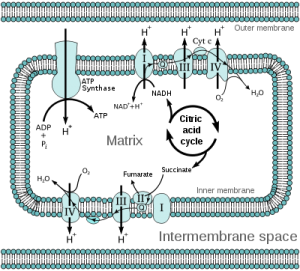Contents: CFTR Gene • Mutation Classes • Vertex Vx-770 Drug • Other Drugs for CF Mutations • Clinical Trials • Books on CF
Today I got a call from a patient with cystic fibrosis, asking if I knew much about a specific mutation called 2184-del-A. It was a striking conversation, particularly because I tend to envision about infants and young children when I think about CF, and this woman was clearly an adult, a working professional, who had some knowledge of her own disease and wanted to know more. She’s particularly interested because of today’s announcement from the CF Foundation and Vertex Pharmaceuticals on the results of a Phase 3 clinical trial for a new CF drug, VX-770. The claim: a significant improvement in lung function among CF patients with the G551D mutation.
For years, I have been occasionally mistaken as a CF expert by non-scientists. This confusion stems from a journal club on the genetics of CF that I gave in graduate school; if you search for “genetics of cystic fibrosis”, my presentation of a 2003 review in Lancet, comes up #5. If you really want to learn from the experts, get the book Cystic Fibrosis: A Guide for Patient and Family by Orenstein, Spahr, and Weiner.
The Cystic Fibrosis Transmembrane Conductor (CFTR) Gene
The CFTR gene encodes a protein in the ATP-Binding Cassette (ABC) family, whose members transport molecules across extracellular (between cell and environment) and intracellular (between compartments within a cell) membranes. The CFTR protein serves as a channel for chloride ions and is important for the creation of sweat and mucus.
Classes of Disease-Causing Mutations
According to the Cystic Fibrosis Mutation Database, more than 1,800 mutations have been described in CFTR, the gene implicated in cystic fibrosis. Because of its prevalence in North American populations, CF is often a component of newborn genetic testing programs. CFTR encodes the cystic fibrosis transmembrane conductance regulator, a chloride channel that transports ions across extra- and intra-cellular membranes.
Traditionally, CFTR mutations are divided into six classes based on their probable effect.
- Class I mutations lead to defective protein products
- Class II mutations result in defective protein processing
- Class III mutations have a defect in the channel regulation
- Class IV mutations are defective in conductance through the channel
- Class V mutations of abnormal splicing.
- Class VI mutations have unknown effects.
Unfortunately, 2184-del-A is in the last category, a mutation of unknown effect. However, a literature search, followed by my own analysis, reveals that the deletion introduces a frameshift at residue 684 and early termination (p.Lys684AsnfsX38). The encoded protein would be severely truncated, with less than half of its 1,480 amino acids. Thus, I suspect that 2184-del-A may represent a class I mutation.
If you think you might be a carrier for CFTR mutations, you can find out with the personal genetic testing service offered by 23andMe.
Gating Mutations and VX-770Class III and IV mutations are typically associated with milder disease, indicating that some channel function remains. The class III mutation targeted by Vertex’s drug (G551D), encodes a protein with a gating defect; it localizes to the membrane, but its channel is unable to use ATP to speed ion transport. VX-770 helps open the gate at the cell surface, allowing chloride ions to flow through. In the Phase 3 trial, patients receiving the drug had improved lung function and reduced sweat chloride levels, suggesting that the drug is treating the underlying defect. Other Drugs, Other MutationsG551D is the third most common mutation, affecting something like 4% of patients. For patients homozygous for “delta-508”, the most common CF mutation, Vertex has another drug in the pipeline. Called VX-809, this drug acts by getting more of the CFTR protein to the cell surface. A phase 2 clinical trial of combined VX-809 and VX-770 treatment in delta-508 patients is currently under way. Given the diversity of CF-causing mutations, designing drugs for one mutation subset at a time seems like a painful process. But considering that CFTR was the first disease gene isolated, it’s refreshing, at least, to see real progress on the path to curing this disease. I know at least one patient who’s pretty excited about it. |
Cystic Fibrosis Treatments in Clinical Trials
This customized search form will let you retrieve information from ClinicalTrials.gov concerning ongoing clinical trials of cystic fibrosis treatments such as VX-770:
Three Excellent Books on Cystic Fibrosis
If you’d like to learn more about cystic fibrosis research, management, and living with the disease, here are some books I’d recommend to you.
 |
Cystic Fibrosis: A Guide for Patient and Family by David Orenstein, Jonathan E. Spahr, and Daniel J. Weiner This is the current definitive resource for people living with cystic fibrosis. It explains the disease process, outlines the fundamentals of diagnosing and screening, and addresses the challenges of treatment. |
 |
Alex: The Life of a Child by Frank Deford The poignant and uplifting story of Alexandra Deford, a precious and precocious girl, was just eight years old when she died of cystic fibrosis in 1980. |
 |
Little Brave Ones: For Children Who Battle Cystic Fibrosisby Carrie Lux A picture book telling the story of one day in the life of a girl with cystic fibrosis. This book’s intended audience is children with CF, to show them that they’re not alone in having to do daily treatments, take numerous medicines, and have hospital stays. |
References
Bompadre, S., Sohma, Y., Li, M., & Hwang, T. (2007). G551D and G1349D, Two CF-associated Mutations in the Signature Sequences of CFTR, Exhibit Distinct Gating Defects The Journal of General Physiology, 129 (4), 285-298 DOI: 10.1085/jgp.200609667

